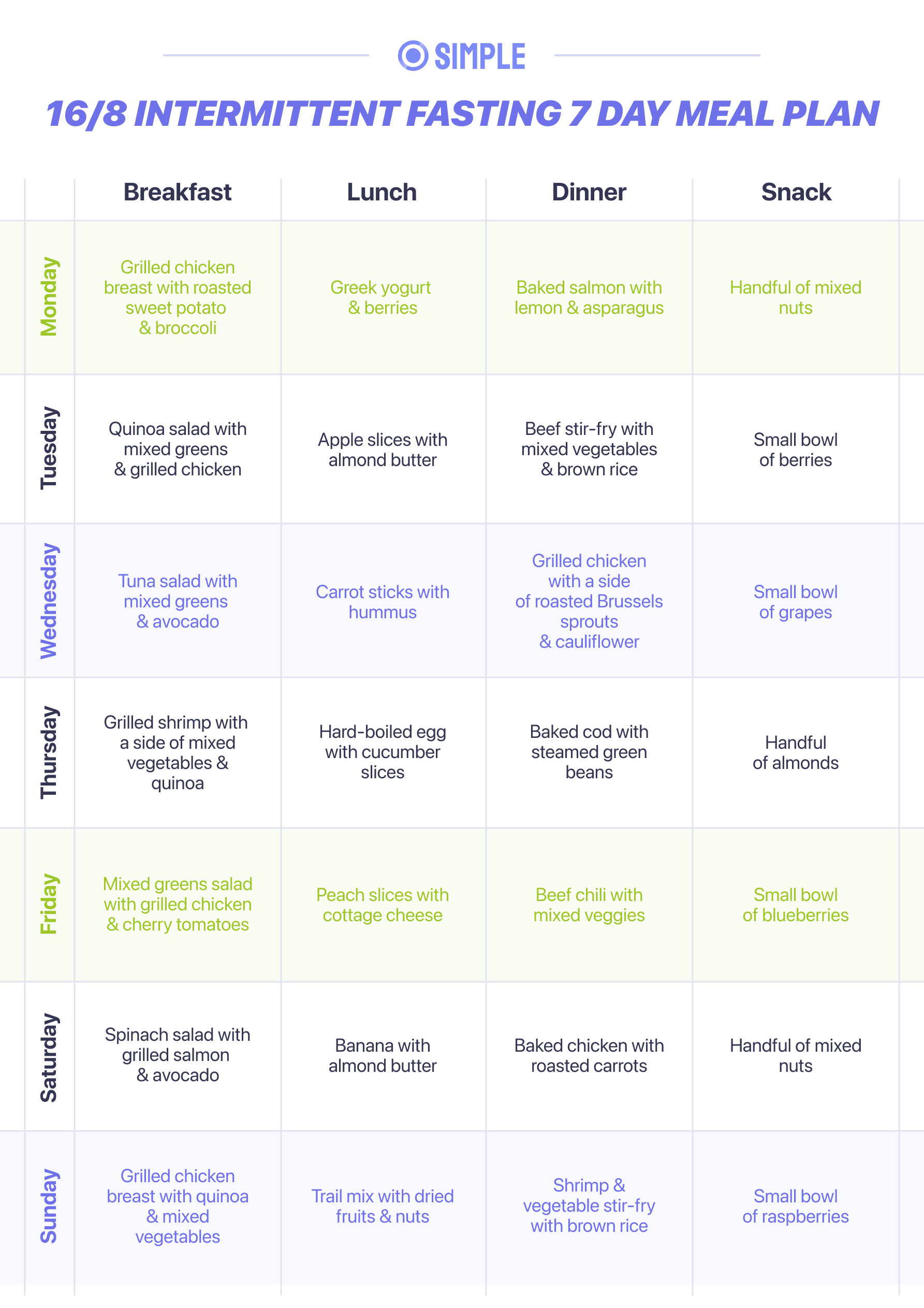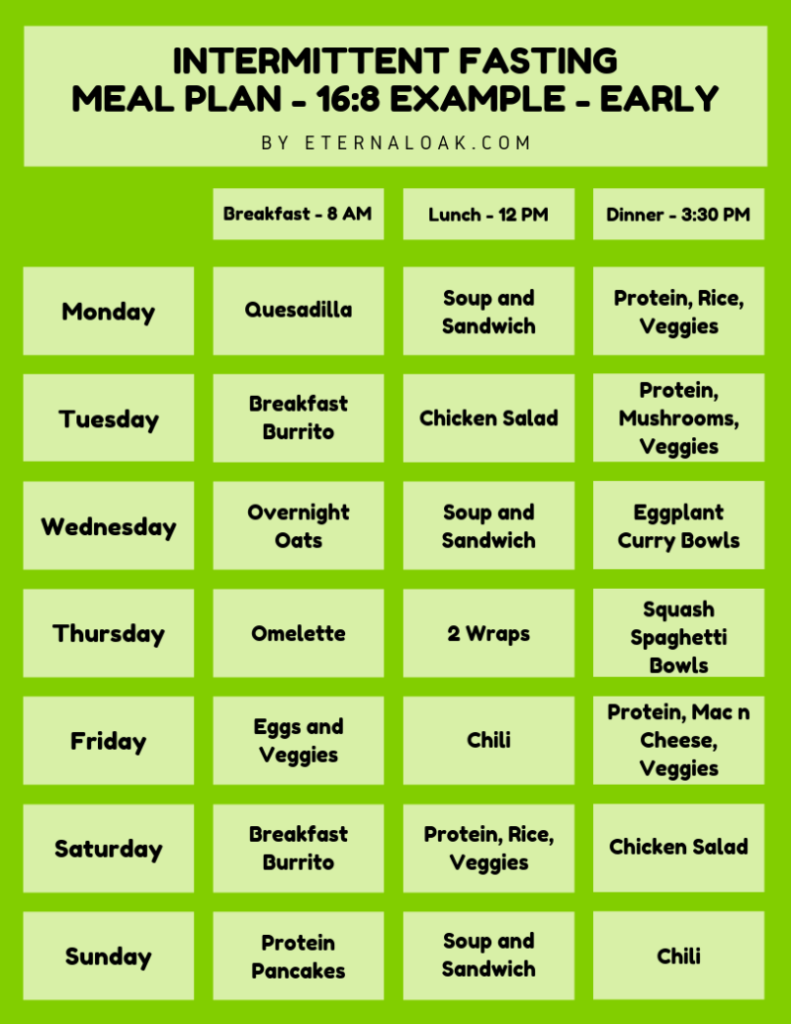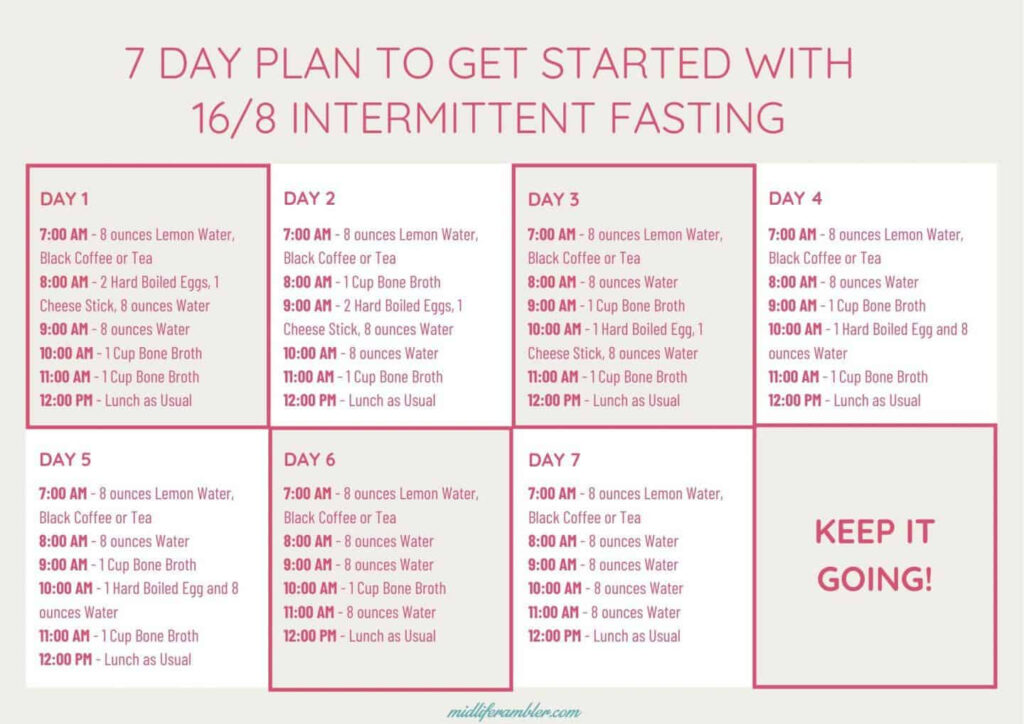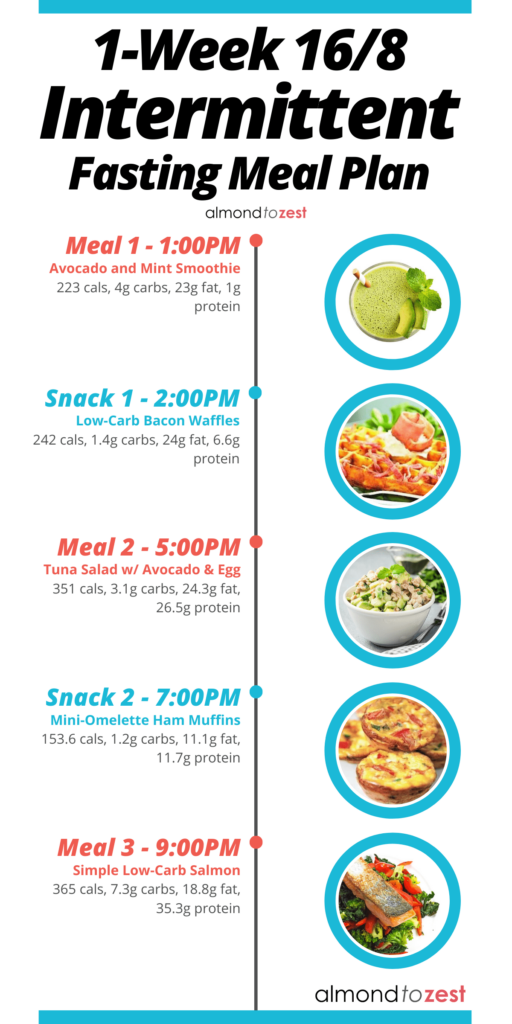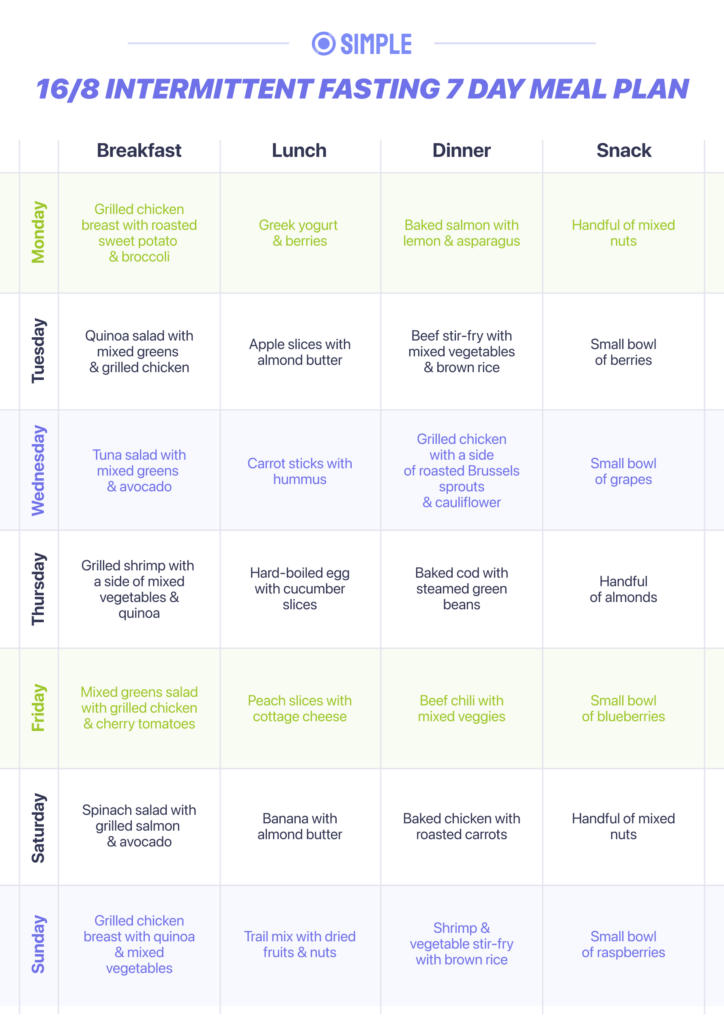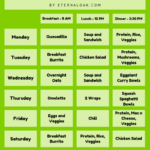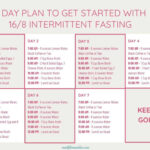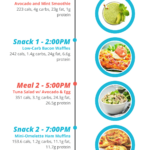Intermittent Fasting Meal Plan Schedule has gained substantial popularity as a dietary technique for fat burning, boosted metabolic health, and potentially enhanced durability. Unlike standard diet plans that concentrate on what to consume, intermittent fasting is all about when you consume. This guide will certainly explore numerous approaches of intermittent fasting, its advantages, exactly how to begin, what to eat, and tips for success.
Types of Intermittent Fasting Meal Plan Schedule
The 16/8 Method
The 16/8 technique includes fasting for 16 hours daily and eating all your meals within an 8-hour home window. For example, you might consume between noontime and 8 p.m., after that fast till twelve noon the next day. This approach is prominent due to its simpleness and sustainability.
The 5:2 Diet
In the 5:2 diet, you consume generally for five days of the week and restrict your calorie consumption to 500-600 calories on the other two days. This allows for significant calorie reduction without continual constraint.
The Eat-Stop-Eat Method
The Eat-Stop-Eat approach includes fasting for 24 hours once or twice a week. For instance, you may fast from dinner one day to supper the following day. This approach can be tough however efficient for weight-loss.
Alternate-Day Fasting
As the name recommends, alternate-day fasting includes fasting every other day. On fasting days, some people consume no food at all, while others take in a small amount (around 500 calories).
The Warrior Diet
The Warrior Diet entails consuming small amounts of raw vegetables and fruits throughout the day and having one large meal during the night. This technique imitates the consuming patterns of ancient warriors and stresses natural, unrefined foods.
Spontaneous Meal Skipping
For those who like a less structured approach, spontaneous meal avoiding entails missing dishes when practical. If you’re not hungry or also busy to eat, you merely skip a meal and permit your body to fast.
Exactly How to Start Intermittent Fasting Meal Plan Schedule
Picking the Right Method
Consider your lifestyle, schedule, and objectives when choosing Intermittent Fasting Meal Plan Schedule technique. Beginning with a technique that seems convenient and adjust as needed.
Setting Realistic Goals
Set achievable and quantifiable goals. Whether it’s reducing weight, boosting metabolic wellness, or enhancing power levels, clear objectives will aid you stay inspired.
Preparing Your Body
Transition gradually into intermittent fasting. Begin with much shorter fasting periods and slowly enhance the duration as your body adapts. Pay attention to your body and readjust appropriately.
What to Eat During Eating Windows
Balanced Meals
Focus on nutrient-dense foods during your eating home windows. Consist of an equilibrium of healthy protein, healthy and balanced fats, and fiber-rich carbohydrates. Instances consist of lean meats, fish, eggs, veggies, fruits, nuts, seeds, and entire grains.
Foods to Avoid
Restriction refined foods, sugary treats, and drinks. These can create energy spikes and accidents, making it harder to stick to your fasting schedule.
Hydration
Stay hydrated by drinking lots of water. Various other acceptable drinks consist of organic teas and black coffee. Hydration is essential for maintaining energy levels and total health and wellness.
Managing Hunger and Cravings
Remaining Busy
Take part in activities to sidetrack on your own from hunger. Physical activities, leisure activities, and social communications can maintain your mind off food.
Drinking Water
Consuming alcohol water can aid take care of appetite. Often, thirst is mistaken for hunger, so staying hydrated can lower unnecessary snacking.
Eating High-Fiber Foods
Consume high-fiber foods during your eating home windows to help you feel full longer. Foods like vegetables, fruits, legumes, and whole grains are excellent choices.
Mindful Eating
Practice conscious eating to improve meal fulfillment. Focus on the flavors, appearances, and aromas of your food. This can help prevent over-eating and enhance your overall connection with food.
Benefits and Potential Side Effects of Intermittent Fasting Meal Plan Schedule
Health Benefits
Intermittent Fasting Meal Plan Schedule offers several health benefits, including weight reduction, boosted insulin level of sensitivity, and boosted brain feature. It can also promote cellular repair procedures and lower swelling.
Prospective Side Effects
While intermittent fasting can be beneficial, it may create first appetite, impatience, and possible nutrient shortages. To reduce these side effects, ensure your diet is well balanced and listen to your body’s demands.
Tips for Intermittent Fasting Meal Plan Schedule Success
Consistency
Consistency is key to the success of intermittent fasting. Adhere to your selected plan and make it a part of your daily routine.
Tracking Progress
Use journals or apps to monitor your progress. Tracking your fasting times, meals, and physical adjustments can help you remain inspired and make necessary adjustments.
Support System
Involve with neighborhoods or discover a fasting friend. Sharing experiences and ideas with others can provide support and responsibility.
Typical Myths and Misconceptions
Hunger Mode
Intermittent Fasting Meal Plan Schedule is commonly puzzled with hunger. Unlike starvation, intermittent fasting is managed and planned, with the goal of enhancing health and body composition.
Muscle Loss
Issues about muscular tissue loss are common, however with correct nourishment and strength training, intermittent fasting can help protect muscular tissue mass while promoting weight loss.
Avoiding Breakfast
The myth that breakfast is the most crucial meal of the day is debunked by intermittent fasting. It’s even more regarding when you eat instead of adhering to standard meal times.
Who Should Avoid Intermittent Fasting Meal Plan Schedule?
Medical Conditions
Individuals with specific clinical problems, such as diabetes or consuming disorders, ought to get in touch with a health care specialist prior to starting intermittent fasting.
Expectant and Breastfeeding Women
Fasting might not be suitable for pregnant or breastfeeding ladies, as they need constant nutrition for their health and the health of their infant.
Individuals with High Physical Activity Levels
Athletes or those with high physical activity levels need to thoroughly consider their energy requirements and might require a customized fasting method.
Conclusion
Intermittent fasting uses a flexible and effective strategy to enhancing health and achieving weight-loss goals. By selecting the right method, focusing on balanced meals, and staying regular, you can efficiently incorporate intermittent fasting into your lifestyle. Bear in mind to listen to your body and readjust your plan as needed.
Latest Meal Plan for Intermittent Fasting Meal Plan Schedule
Extra Resources
Publications and Articles
- “The Complete Guide to Fasting” by Dr. Jason Fung
- “Fast. Banquet. Repeat.” by Gin Stephens
Applications and Tools
- No (fasting tracker app)
- MyFitnessPal (meal and calorie tracking app)
Community Support
- On-line forums and social networks teams, such as Reddit’s r/intermittentfasting and Facebook groups dedicated to fasting.
